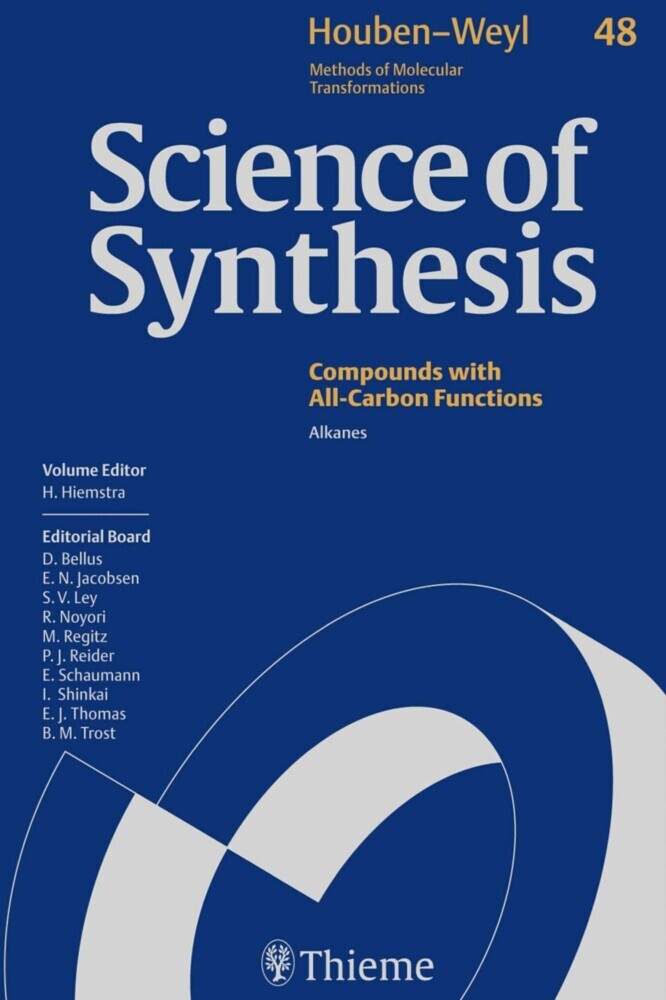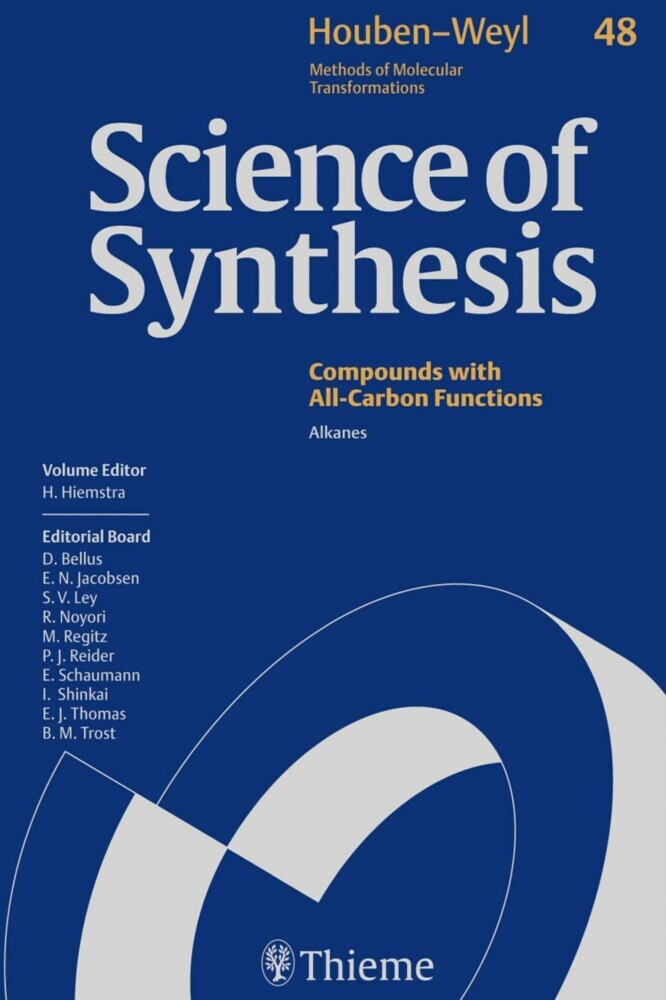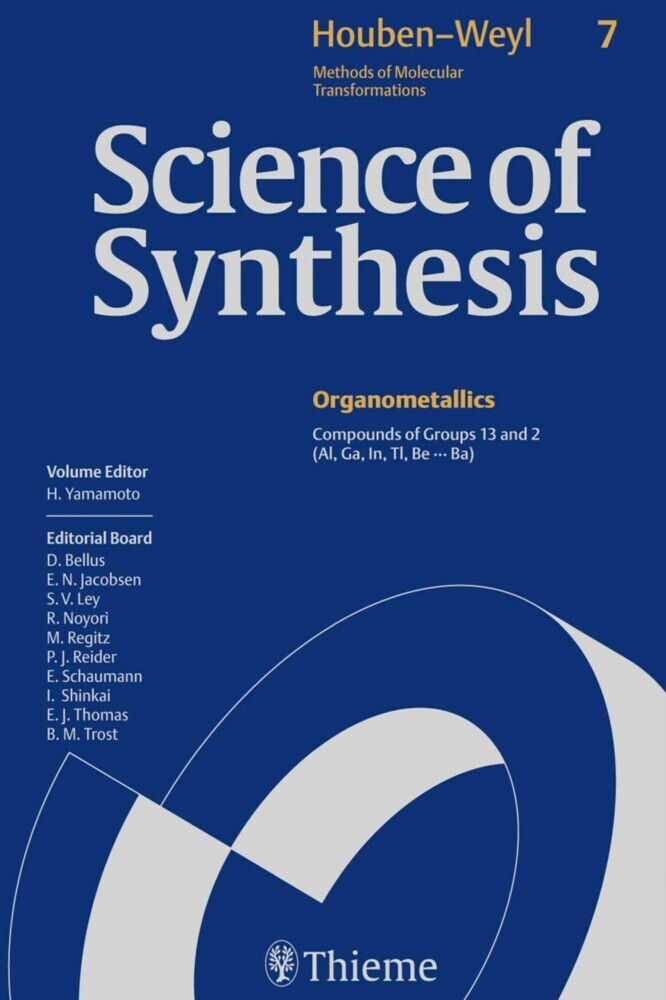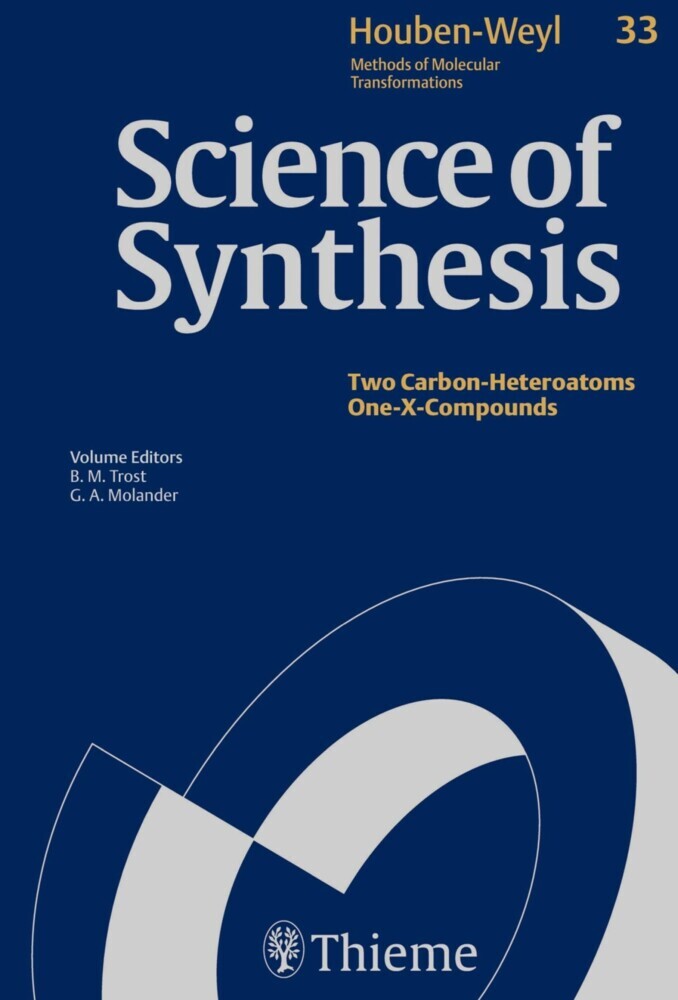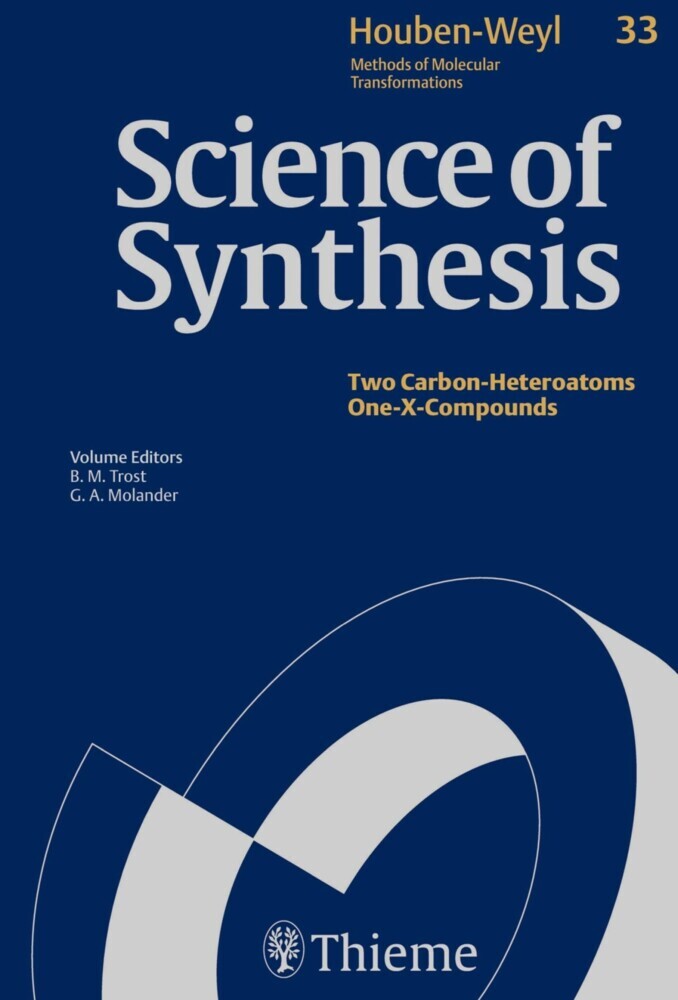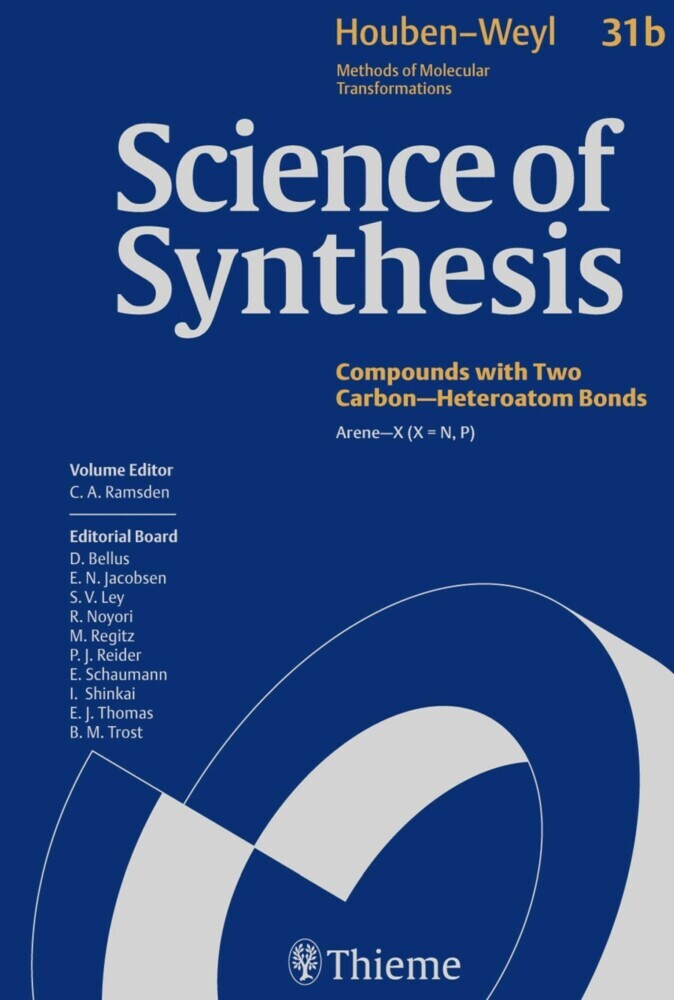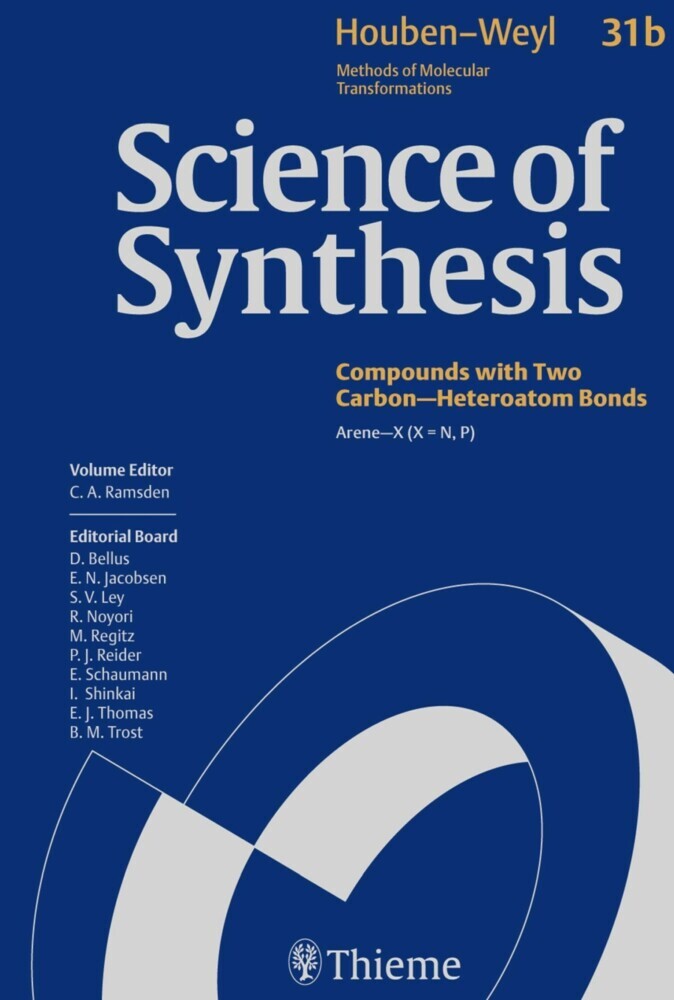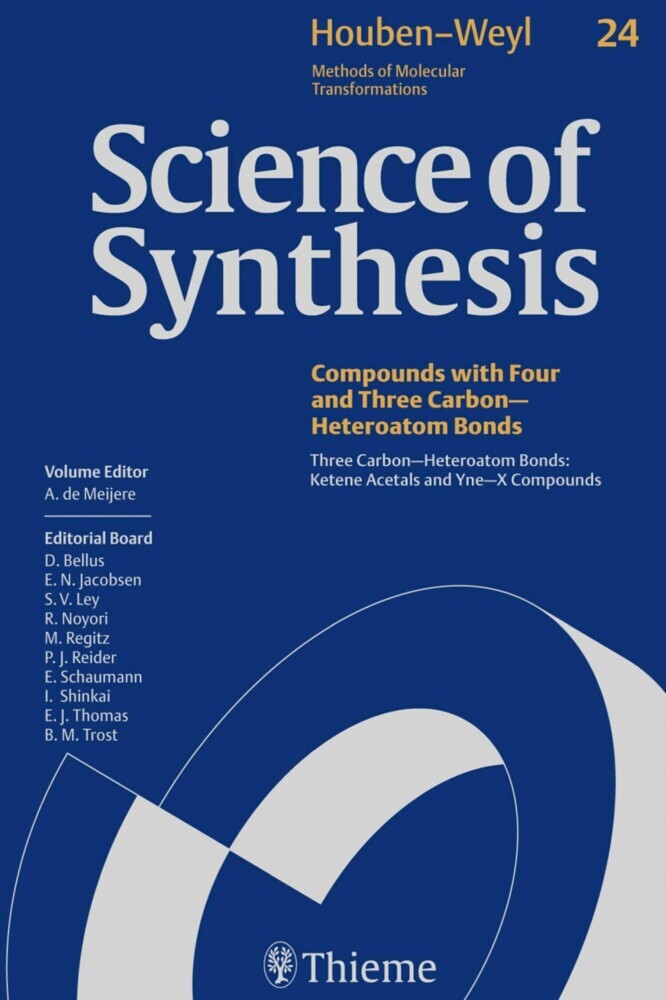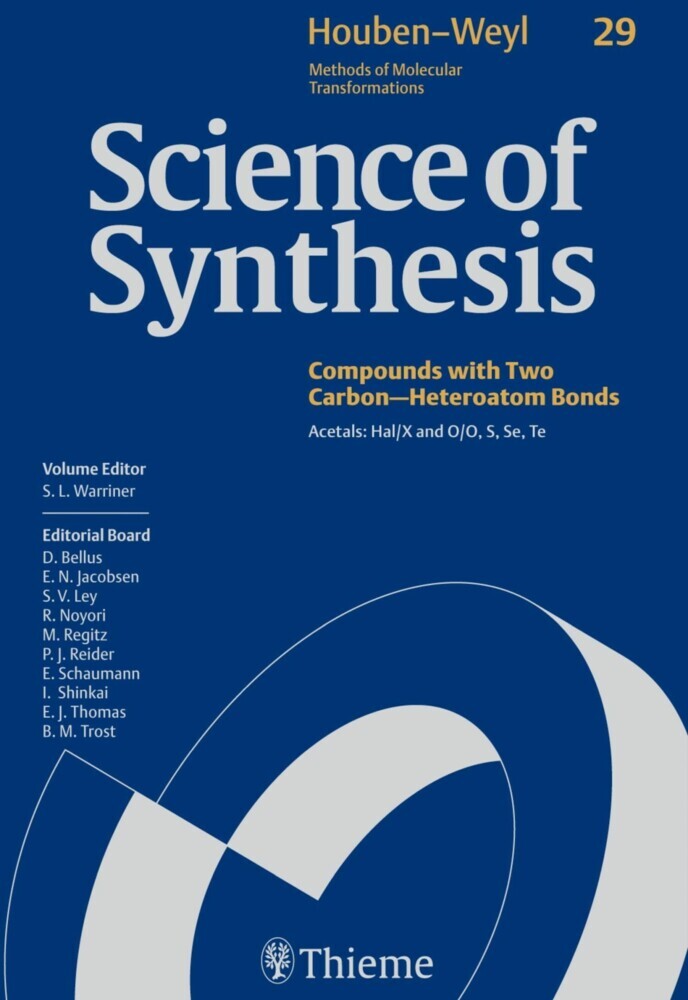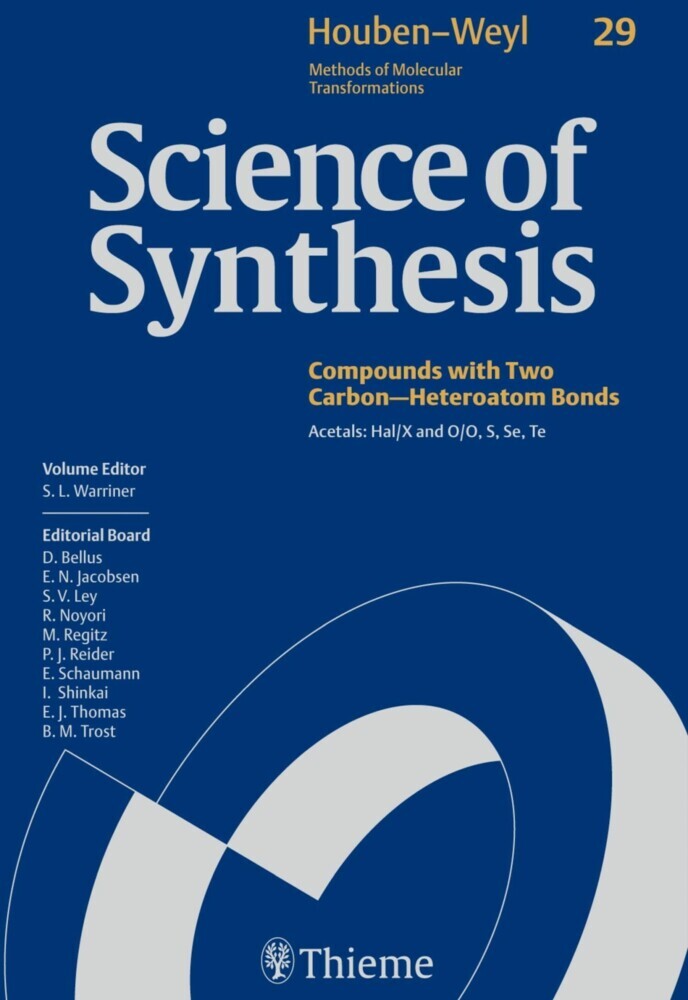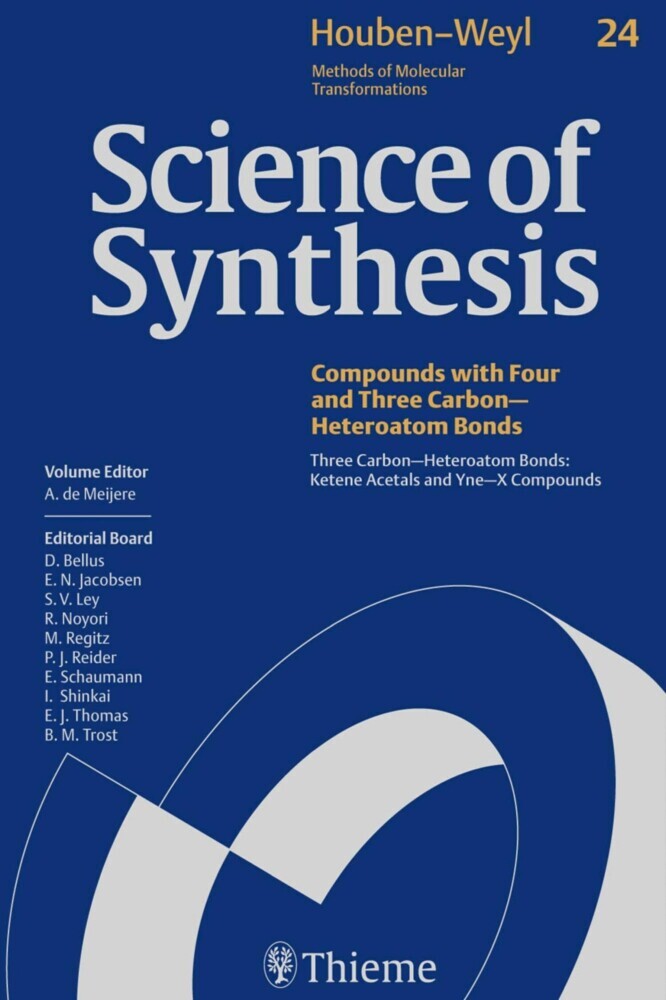Science of Synthesis: Houben-Weyl Methods of Molecular Transformations Vol. 48
Alkanes
Science of Synthesis: Houben-Weyl Methods of Molecular Transformations is the entirely new edition of the acclaimed reference series Houben-Weyl, the standard synthetic chemistry resource since 1909. This new edition is published in English and will comprise 48 volumes published between the years 2000 and 2008.
Science of Synthesis is a quality reference work developed by a highly esteemed editorial board to provide a comprehensive and critical selection of reliable organic and organometallic synthetic methods. This unique resource is designed to be the first point of reference when searching for a synthesis strategy.
- Contains the expertise of presently 400 leading chemists worldwide
- Critically evaluates the preparative applicability and significance of the synthetic methods
- Discusses relevant background information and provides detailed experimental procedures
For full information on the Science of Synthesis series, visit the Science of Synthesis Homepage.
1;Science of Synthesis - Volume 48: Alkanes;1 1.1;Title page;3 1.2;Imprint;5 1.3;Preface;6 1.4;Overview;8 1.5;Table of Contents;10 1.6;Introduction;24 1.7;48.1 Product Class 1: Acyclic Alkanes;32 1.7.1;48.1.1 Synthesis by Metal Substitution with Retention of the Carbon Framework;32 1.7.1.1;48.1.1.1 Method 1: Synthesis by Protonation of Carbon--Metal Bonds;32 1.7.1.1.1;48.1.1.1.1 Variation 1: Acidolysis of Alkyl Derivatives of Metals from Groups 14 and 15 (Including Boron);33 1.7.1.1.2;48.1.1.1.2 Variation 2: Protonolysis of Alkyl Derivatives of Metals from Groups 5--11;37 1.7.1.1.3;48.1.1.1.3 Variation 3: Protonolysis of Alkyl Derivatives of Metals from Groups 3, 4, 12, and 13 (Including Lanthanides and Actinides, Excluding Boron);38 1.7.1.1.4;48.1.1.1.4 Variation 4: Protonolysis of Alkyl Derivatives of Metals from Groups 1 and 2;41 1.7.1.2;48.1.1.2 Method 2: Synthesis by Hydrogenolysis of Carbon--Metal Bonds;46 1.7.1.2.1;48.1.1.2.1 Variation 1: Hydrogenolysis and Reductive Cleavage of Carbon--Metal Bonds;46 1.7.1.2.2;48.1.1.2.2 Variation 2: Reductive Elimination from Alkyl--Transition Metal Hydrido Complexes;48 1.7.2;48.1.2 Synthesis by Metal Substitution with Extension of the Carbon Framework;52 1.7.2.1;48.1.2.1 Method 1: Noncatalyzed Coupling Reactions of Nonactivated Alkyl Electrophiles with Organometallic Reagents;53 1.7.2.1.1;48.1.2.1.1 Variation 1: Using Main-Group Organometallic Reagents;53 1.7.2.1.2;48.1.2.1.2 Variation 2: Using Transition-Metal Organometallic Reagents;55 1.7.2.2;48.1.2.2 Method 2: Catalyzed Coupling Reactions of Nonactivated Alkyl Electrophiles with Organometallic Reagents;59 1.7.2.2.1;48.1.2.2.1 Variation 1: Couplings of Alkyl Grignard Reagents (Kumada--Tamao--Corriu Reaction) Mediated by Copper, Silver, Nickel, Palladium, Iron, and Cobalt;61 1.7.2.2.2;48.1.2.2.2 Variation 2: Couplings of Alkylzinc Reagents (Negishi Reaction) Mediated by Nickel and Palladium;74 1.7.2.2.3;48.1.2.2.3 Variation 3: Couplings of Alkyl Boron Compounds (Suzuki--Miyaura Reaction) Mediated by Palladium and Nickel;86 1.7.2.2.4;48.1.2.2.4 Variation 4: Couplings of Other Alkyl Organometallic Compounds;99 1.7.2.3;48.1.2.3 Method 3: Oxidative Coupling of Alkyl Organometallic Reagents;100 1.7.2.3.1;48.1.2.3.1 Variation 1: Reductive Elimination from Dialkyl Transition-Metal Complexes;106 1.7.2.3.2;48.1.2.3.2 Variation 2: Kolbe Electrolysis;108 1.7.2.4;48.1.2.4 Method 4: Reductive Coupling of Alkyl Halides;110 1.7.3;48.1.3 Synthesis by Reduction without C--C Bond Cleavage;120 1.7.3.1;48.1.3.1 Reduction of Carbonic or Carboxylic Acids, Aldehydes, Ketones, or Derivatives;120 1.7.3.1.1;48.1.3.1.1 Method 1: The Clemmensen Reduction (Deoxygenation of Aldehydes or Ketones Using Zinc and Hydrochloric Acid);122 1.7.3.1.1.1;48.1.3.1.1.1 Variation 1: Reduction with Zinc--Hydrochloric Acid in an Aqueous Solution;123 1.7.3.1.1.2;48.1.3.1.1.2 Variation 2: Reduction with Zinc--Hydrochloric Acid in the Presence of Water-Miscible Solvents;124 1.7.3.1.1.3;48.1.3.1.1.3 Variation 3: Reduction with Zinc--Hydrochloric Acid in the Presence of Water-Immiscible Solvents;125 1.7.3.1.1.4;48.1.3.1.1.4 Variation 4: Reduction with Zinc in Organic Solvents Saturated with Hydrogen Chloride;125 1.7.3.1.1.5;48.1.3.1.1.5 Variation 5: Ultrasound-Assisted Zinc--Protic Acid Reduction;127 1.7.3.1.1.6;48.1.3.1.1.6 Variation 6: Miscellaneous Methods;127 1.7.3.1.2;48.1.3.1.2 Method 2: Other Direct Deoxygenation Methods;128 1.7.3.1.2.1;48.1.3.1.2.1 Variation 1: Deoxygenation of Aromatic Ketones with Hydrogen Iodide;128 1.7.3.1.2.2;48.1.3.1.2.2 Variation 2: Deoxygenation of Carbonyl Compounds by Catalytic Hydrogenation;128 1.7.3.1.2.3;48.1.3.1.2.3 Variation 3: Deoxygenation of Aromatic Acids, Aldehydes, and Ketones Using the Trichlorosilane--Tripropylamine Couple;129 1.7.3.1.2.4;48.1.3.1.2.4 Variation 4: Deoxygenation of Ketones Using the Triethylsilane--Trifluoroacetic Acid Couple;130 1.7.3.1.2.5;48.1.3.1.2.5 Variation 5: Deoxygenation
| ISBN | 9783131722911 |
|---|---|
| Article number | 9783131722911 |
| Media type | eBook - PDF |
| Copyright year | 2014 |
| Publisher | Georg Thieme Verlag KG |
| Length | 853 pages |
| Language | English |
| Copy protection | Digital watermarking |

